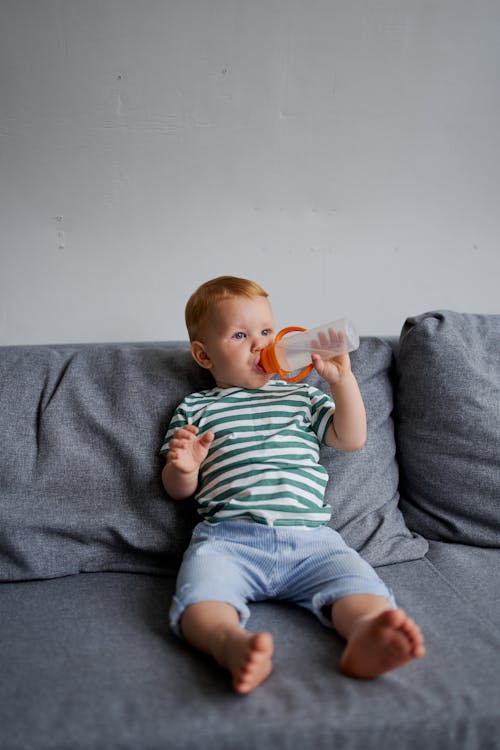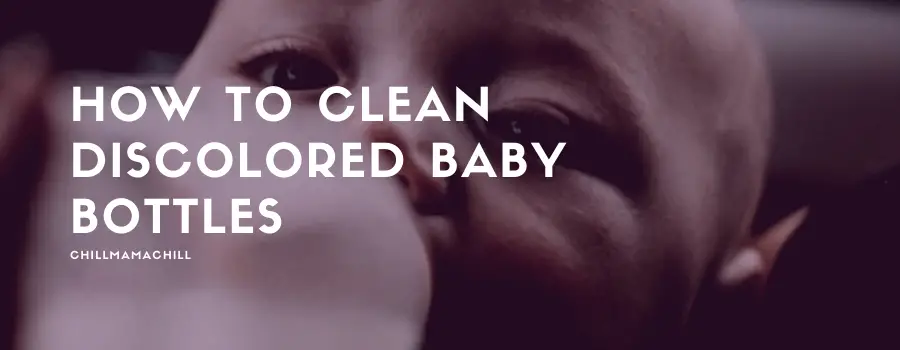With frequent use and possibly changes from breast milk, formula, or juices, your child’s feeding bottle is going to start looking disenchanting. Fat and proteins residues in these food items stick to the plastic or glass of the container. Soon, these turn yellowish despite your best cleaning efforts. It’s, therefore, time to learn tips on how to clean discolored baby bottles using natural, safe, and cost-effective methods.
White vinegar, a common kitchen condiment, when mixed with a half ratio of warm water, will help remove cloudiness and staining from your baby’s feeding bottles. You can also use a tablespoon of baking powder. Let the solution sit overnight to return clarity to the glass or plastic of the bottle.
The type of dishwashing compound you use and how long you let the bottles sit with leftover contents determine the amount of discoloration or staining. The following tips and how to apply them will be sufficient to result in a relative reduction and complete fending off of stains.
What Causes the Discoloration on Baby Bottles?
Does the cloudiness and discoloration on your baby bottles seem to linger or worsen? That’s despite how much you’ve soaked, washed, and scrubbed? Before you start considering their replacement, and since a new set will also discolor, let’s look at the culprits for this staining. After that, you’ll understand what is involved in permanently getting rid of the yellow cloudiness.

A hazy-looking feeding bottle doesn’t necessarily reflect well on the level of hygiene you’ve set for your child. But it sure looks suspect even when it’s clean and germ-free. Baby bottles are commonly made from silicone, plastic, or glass. Several aspects impact the structures of these materials to wear out and lose transparency.
The baby’s feed, which includes breast milk, formula, fruit juices, and even early cereal mixes, contains proteins and fats, which naturally stick to a bottle’s walls. Heat is the catalyst for this process, and sterilization, dishwashing, microwaving, and boiling contribute to the stickiness of this discoloration. Heavy grease builds up within the bottle, which, although it appears smooth, contains minute imperfections where the fat compounds stick.
After prolonged buildup and with the help of high temperatures, cloudiness and discolorations appear. Some bottle brushes are similarly abrasive enough to damage the bottle materials integrity, which will, over time, result in staining. Glass bottles are the better materials at handling scratches, or you can use a silicone brush that will not scratch the surface of the container.
How Do You Clean Discolored Baby Bottles?
No baby bottle is created equal. Depending on your feeding apparatus’ materials will cloud or yellow up soon enough. I recommend washing out bottles as soon as they’re used with mild dish soap and warm water. Not only does this hold back discoloration, but you’ll be able to maintain bacteria-free hygiene.
To clean discolored baby bottles, use white vinegar as the most natural and safe stain removing agent. Create a 50-50 mixture by combining one part of the acetic-based cleaner with water. Soak your baby bottle for two hours or more, including the nipples and other parts in the solution. Afterward, rinse the bottle and all parts in cold water and air dry on a clean towel.
If stains and cloudy discoloration don’t get clean, it’s time to bring in a harsher but safe cleaner, bicarbonate of soda. Baking soda will help remove cloudiness and hard yellow staining from plastic, silicone, and glass baby bottles.
Can You Clean Discolored Baby Bottles with Dish Soap?
When you’re endeavoring to maintain your baby’s bottles from discoloration, mild dish soap is particularly essential for soaking. However, check to ensure that the selected utensils cleaner doesn’t contain Sodium Laureth Sulfate or Sodium Lauryl Sulfate, also known as SLES. These chemicals are carcinogenic and can cause long-term problems to your child with continued exposure.
Avoid also dyes and fragrances or any other additives listed as toxic or corrosive. Keep an eye out for anything containing chlorine bleach. Not only is this harsh cleaner unsafe for your baby’s health, but it will also cloud your plastic or silicone bottles. The cleaner tends to leave a chemical smell that’s hard to get rid of except with continual cleaning with baking powder.

Look for dish soap that has natural, non-toxic ingredients, especially those derived from plants. These will also contain hydrogen-based stain lifters, which help lift any woozy odors from your baby bottles.
Are There Baby Bottles That Won’t Discolor with Use?
When picking a baby bottle, and especially with the ease of cleaning discoloration in mind, other variables crave your consideration. Caring for the right type of bottles will prove easy, as so will keeping staining at bay.
You should pick glass over plastic for the main bottle container and silicone over latex for the teat or nipple. Glass is a sturdier natural material that’s long-lasting and won’t sour feed or discolors like its counterparts. However, while being more expensive, this material is heavy and, when dropped, will shatter into pieces.
Plastics, silicone, and other polymer composites are more common bottle materials, the best of which are made from polypropylene. These bottles are lightweight, easy to maintain, and won’t break easily, but wear and discolor quicker than glass.
Whether plastic, glass, or other material, replace your baby bottle when you notice a crack, break, or leak. You can also discard bottles that are souring your baby’s milk, even after repeated sterilization. Replace the nipples after every three months or when you’ve noticed tears or the material slacking.
Conclusion
A little vinegar or a solution with baking powder is all it takes to soak out the discoloration on your baby’s feeding bottles. Unless your bottle has a natural milk hue, such as those made from polyamide plastics, you can address staining with these natural ingredients. While scrubbing is also recommended, use soft silicone brushes after the stain lifts while avoiding sterilization with high heat.
If discoloration goes unchecked, bacteria and other harmful germs will propagate on the bottle’s surface unless you sanitize often. Baking soda and white vinegar are readily available and cheap, which means you’ll be cleaning discoloration from your baby’s bottles for a long time.

I’m Cathrine and I’m a 39-year-old mother of 3 from Utica, New York. And I’m extremely happy you’ve come to visit my hide-out on the web. Here I post about everything related to family-life and usually it will involve babies and lessons I’ve learned over the years from experts, friends, and my own mistakes. So hopefully you will find what i write fun and informational!


